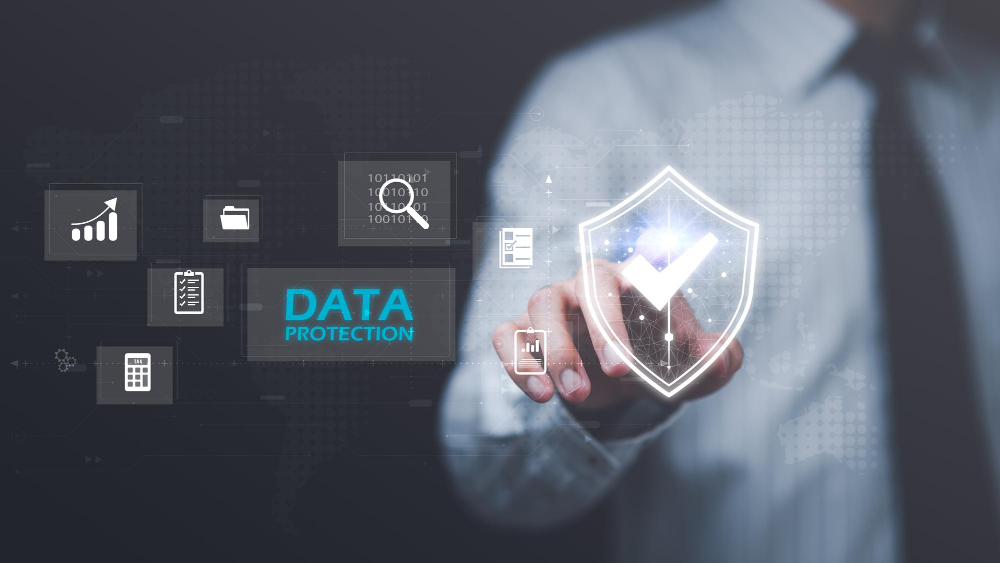In today’s digital landscape, ransomware has become one of the most pervasive cyber threats. It specifically targets endpoint devices like computers, laptops, and mobile devices, locking users out of their systems and demanding a ransom to regain access. This malicious software can bring an entire organization to a halt, causing massive disruptions and financial losses. But what exactly happens when ransomware infects an endpoint device?
In this article, we will delve into the intricate ways ransomware works, what it does to endpoint devices, and how businesses can protect themselves.
Introduction to Ransomware
Ransomware is a type of malware designed to encrypt files or lock users out of their own systems until they pay a ransom, usually in cryptocurrency like Bitcoin. The most troubling part about ransomware is how quickly it can spread across an organization’s network, infecting multiple endpoints within minutes.
Endpoint devices are often the first targets for ransomware attacks. These devices serve as the gateway through which ransomware can penetrate an organization’s network. Once ransomware compromises an endpoint, it can quickly escalate, causing widespread damage.
What Are Endpoints?
Before exploring ransomware’s impact, let’s first define endpoints. Endpoints are remote computing devices that connect to a network. These include:
- Desktop computers
- Laptops
- Smartphones and tablets
- IoT devices
- Servers
Endpoints are often the weakest link in an organization’s cybersecurity chain, making them prime targets for ransomware attacks.
How Does Ransomware Infect an Endpoint?
To understand the damage ransomware causes, it’s important to know how it first infects an endpoint. Ransomware can infiltrate an endpoint device through several methods:
1. Phishing Emails
One of the most common methods ransomware uses is through phishing emails. Attackers send a legitimate-looking email that tricks users into clicking on a link or downloading a malicious attachment. Once clicked, the ransomware begins to download onto the endpoint.
2. Exploit Kits
Attackers may use exploit kits that scan devices for vulnerabilities. These kits target weaknesses in outdated software, unpatched systems, or poorly configured endpoints, allowing ransomware to enter unnoticed.
3. Remote Desktop Protocol (RDP) Exploits
RDP is a tool that allows remote access to computers. Cybercriminals often exploit RDP vulnerabilities to install ransomware on endpoint devices.
4. Malicious Websites and Ads
Ransomware can also be delivered through malvertising (malicious advertisements) or websites infected with ransomware code. Simply visiting these sites can trigger a ransomware download onto the endpoint device.
What Happens to an Endpoint Device Once Ransomware Is Installed?
Once ransomware infects an endpoint, it goes through several steps to lock the user out and demand a ransom. Here’s a breakdown of what happens when ransomware takes control of an endpoint device.
1. Encryption of Files
The first action most ransomware performs is encrypting files on the endpoint device. Encryption renders the files inaccessible by scrambling the data and only allowing access via a decryption key, which the attacker holds.
- Targeted files often include documents, images, videos, and databases.
- The ransomware might also look for backup files or cloud-synced folders, encrypting or deleting these files to further prevent recovery.
2. Locking the System
Some types of ransomware, known as locker ransomware, will lock the entire endpoint device rather than just encrypt files. In these cases, users are completely locked out of their device, unable to use it or access any files.
- A message appears on the screen, demanding the user pay a ransom in exchange for unlocking the system.
- The attacker might display a countdown timer to create a sense of urgency, pressuring the victim to pay quickly.
3. Disabling Security Features
After encryption or system lock, ransomware often attempts to disable security features on the endpoint, such as:
- Antivirus software
- Firewall settings
- Endpoint detection and response (EDR) solutions
By disabling these security tools, the ransomware ensures it remains undetected and difficult to remove. This tactic also prevents the user from regaining control of the endpoint device or removing the ransomware on their own.
4. Communication with the Attacker
At this point, the ransomware begins communicating with the attacker via the internet. The attacker may issue further commands, request payment, or send the decryption key once the ransom is paid.
- In some instances, attackers will threaten to release sensitive data to the public if the ransom is not paid, adding an extra layer of extortion.
- The attacker usually demands payment in cryptocurrency, making the transaction difficult to trace.
5. Spread to Other Devices
Ransomware doesn’t always stop at a single endpoint device. Many strains are designed to spread laterally across a network, infecting other endpoints and servers.
- Ransomware like WannaCry and NotPetya are infamous for their ability to spread rapidly across networks, crippling multiple systems.
- Once an endpoint is compromised, the ransomware scans for other connected devices and spreads through shared networks, USB drives, or cloud services.
The Aftermath: Impact of Ransomware on Endpoints
The impact of ransomware on an endpoint device is devastating. Once an endpoint is infected, the consequences can include:
1. Loss of Access to Critical Data
With files encrypted or the system locked, users lose access to critical data. If the infected endpoint belongs to a company executive, it could mean financial reports, confidential plans, or sensitive customer data are inaccessible.
2. Operational Disruption
Ransomware can cripple operations by locking users out of essential systems. For businesses, this may result in:
- Downtime for critical operations
- Loss of productivity across multiple departments
- Inability to fulfill customer orders or services
3. Financial Losses
The ransom itself can range from hundreds to millions of dollars. Beyond the ransom, businesses face additional costs, such as:
- System recovery costs
- IT security upgrades
- Fines for data breaches
4. Reputational Damage
For businesses, a ransomware attack can lead to a loss of customer trust. Customers may no longer feel their data is safe with a company that has suffered a breach. This can have long-term consequences for brand reputation.
5. Data Loss
Even if a ransom is paid, there is no guarantee that the attacker will provide the decryption key. In many cases, businesses lose their data permanently.
How to Protect Endpoints from Ransomware Attacks
Ransomware is a growing threat, but businesses and individuals can take proactive steps to protect their endpoint devices.
1. Regular Backups
Ensure all critical files are regularly backed up to an external, secure location. This ensures data can be restored without paying a ransom.
2. Update Software
Always keep endpoint devices updated with the latest patches and security updates to fix vulnerabilities.
3. Use Strong Security Tools
Implement endpoint protection solutions that detect and block ransomware. Consider solutions like antivirus, firewalls, and EDR software.
4. Employee Training
Educate employees on identifying phishing emails, suspicious links, and unsafe downloads. Awareness is the first line of defense.
5. Multi-Factor Authentication
Use multi-factor authentication (MFA) to add an extra layer of protection for remote access to endpoint devices.
Conclusion: Ransomware’s Devastating Impact on Endpoint Devices
Ransomware is a significant threat to any endpoint device, whether it’s a personal computer or a business-critical server. By encrypting files, locking systems, and disabling security features, ransomware can cause long-lasting damage. The ability to spread across networks and affect multiple endpoints makes this malware particularly dangerous for businesses.
However, by understanding how ransomware works and taking preventative measures like backups, software updates, and employee training, businesses can reduce the risk and impact of these attacks. With the right strategy, endpoints can remain secure, and the devastating effects of ransomware can be minimized.




